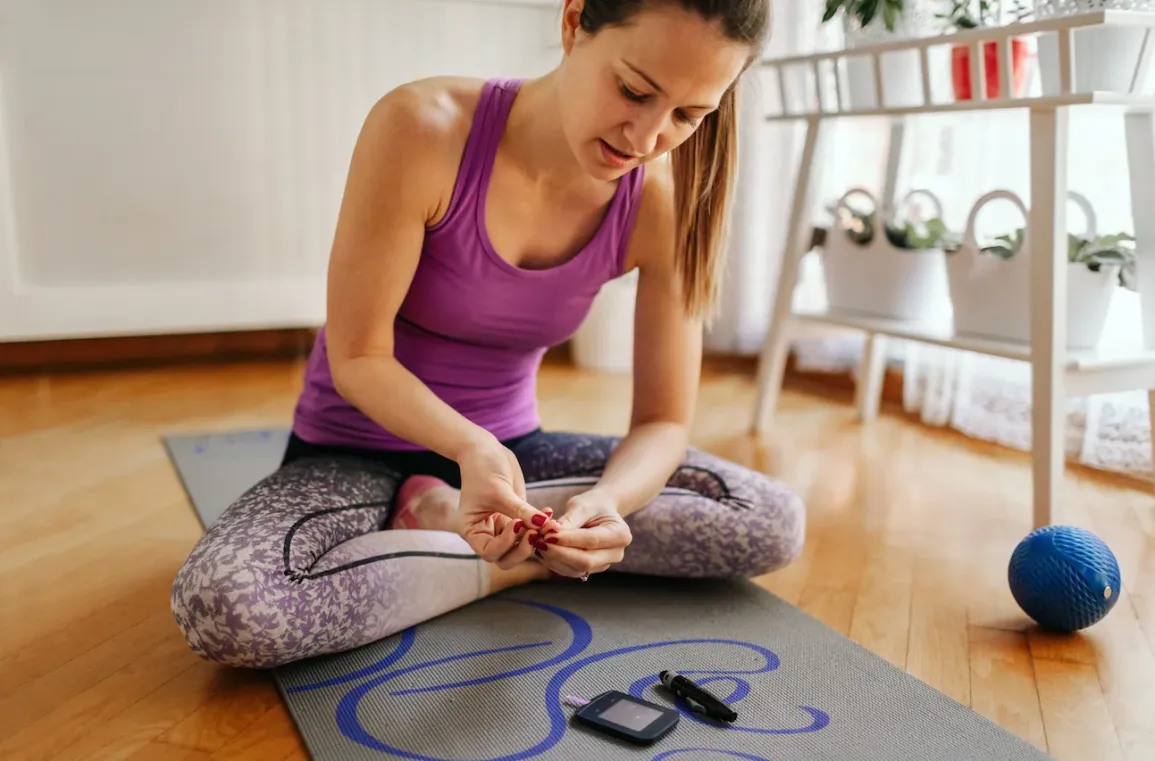Are you frustrated by the fact that your blood sugar levels seem to rise when you exercise? You’re not alone. Many people with diabetes experience this phenomenon, and it can be quite perplexing. But fear not, because, in this blog post, we’ll share the reasons behind this increase in blood sugar and provide you with some helpful insights to manage it effectively.

Contents
Why Does My Blood Sugar Go Up When I Exercise?
When you exercise, it’s common for your blood sugar levels to increase. This can be puzzling and frustrating, especially if you’re trying to manage your diabetes. Let’s find out the reasons why your blood sugar may go up during exercise and what you can do about it.
1. Hormonal response::
During exercise, your body releases hormones, such as adrenaline, cortisol, and growth hormone. These hormones can raise blood glucose levels. This response is a natural part of your body’s stress response and is meant to provide you with energy and fuel for physical exertion.
2. Liver glucose release::
Another reason for the increase in blood sugar during exercise is the release of glucose from your liver. Your liver stores glucose to maintain stable blood sugar levels throughout the day. When you exercise, your body signals the liver to release stored glucose, leading to an elevation in blood sugar.

3. Insulin sensitivity::
Engaging in physical activity can improve your body’s insulin sensitivity, making your cells more responsive to the effects of insulin. As a result, your body may require less insulin to move glucose out of the bloodstream and into the cells. This can cause a temporary increase in blood sugar levels during exercise.
Factors That Influence Blood Sugar Response to Exercise
When it comes to why your blood sugar goes up during exercise, there are several factors at play. Understanding these factors can help you better manage your blood sugar levels during physical activity. Here are some key factors that influence your blood sugar response to exercise:
1. Intensity and Duration of Exercise:
The intensity and duration of your workout can have a significant impact on your blood sugar levels. Moderate to intense exercise tends to lower blood sugar levels, as it increases the sensitivity of your muscle cells to insulin. However, intense exercise can also cause temporary glucose spikes. It’s important to find the right balance and monitor your blood sugar levels accordingly.
2. Hormonal Responses:
During exercise, your body releases hormones like adrenaline and glucagon, which can lead to an increase in blood sugar levels. Adrenaline causes your liver to release glucose into the bloodstream, while glucagon promotes the breakdown of glycogen (stored glucose) for energy. These hormonal responses can contribute to elevated blood sugar during exercise.
3. Type of Exercise:
The type of exercise you engage in also affects your blood sugar response. Different activities have varying effects on blood sugar levels. For example, aerobic exercises like running or cycling tend to lower blood sugar, while high-intensity activities like weightlifting may temporarily increase it due to the release of adrenaline.
4. Individual Variations:
It’s important to remember that everyone’s body is unique, and individual differences can impact how your blood sugar responds to exercise. Factors such as age, fitness level, medication use, and overall health can all influence your blood sugar regulation during physical activity.
Strategies to Manage Blood Sugar During Exercise
When it comes to managing your blood sugar levels during exercise, a little preparation can go a long way. By incorporating the following strategies, you can help keep your blood sugar levels stable and ensure a safe and effective workout:

- Measure your blood sugar levels: Before, during, and after exercise, it’s important to measure your blood sugar levels. This will help you understand your normal levels and identify any trends. Regular monitoring allows you to make necessary adjustments to your insulin or medication if needed.
- Eat a small snack before working out: Consuming a mix of fat, protein, and carbohydrates before exercising can help provide a steady source of energy and prevent your blood sugar from dropping too low. Opt for a healthy snack such as a banana with almond butter or a handful of nuts and seeds.
- Stay hydrated: Proper hydration is essential during exercise, as it can help regulate your blood sugar levels. Make sure to drink plenty of water throughout your workout to stay hydrated. If you’re engaging in prolonged or intense exercise, consider adding an electrolyte drink to replenish lost fluids and minerals.
- Carbased snack for immediate blood sugar drop: If you experience a sudden drop in blood sugar levels after exercising, reach for a carbbased snack to quickly raise your blood sugar. Choose something easily digestible like a piece of fruit or a small granola bar.
Frequently Asked Questions
Can walking 30 minutes a day lower blood sugar?
Yes, studies have shown that a 30-minute brisk walk within 30 minutes after a meal can lower blood sugar levels significantly.
How do you stabilize blood sugar levels?
To stabilize blood sugar levels, maintain a healthy diet with plenty of fruits and vegetables, maintain a healthy weight, and engage in regular physical activity. Keep track of blood sugar levels and eat at regular times, avoiding skipping meals.
What blood sugar is too high to exercise?
A blood sugar level of 250 mg/dL (13.9 mmol/L) or higher is considered too high to exercise safely.

Hello, I’m Ravindra. Over the years, I’ve immersed myself deeply into the world of fitness and health, transforming both my body and mind. Writing has allowed me to share my journey, insights, and expertise with those just starting out and seasoned fitness enthusiasts alike. Beyond just routines and diets, I believe in inspiring others to adopt a holistic approach to well-being.
